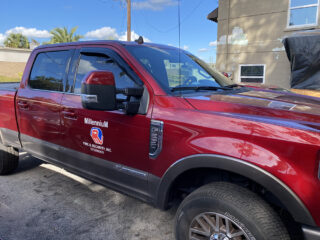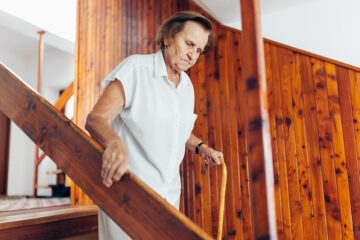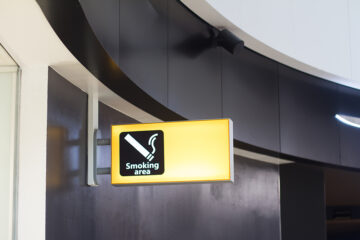The Steps to Making Your Retirement Home a Safer Place
Last time we spoke about how retirement homes make up over half the fires in the medical industry. We wanted to take some time to explain the kinds of things you should be keeping in mind as the manager of a retirement home, from escape plan creation to staff training.
By the end of this article, you’ll know how to reduce the chances of a fire and how to maximize the chances of your residents all escaping safely should the worst come to pass. The only thing worse than “Fire at Retirement Home” is “Deaths in Assisted Living Facility Fire.”
Plan Ahead of Time
 Create an Escape Plan
Create an Escape Plan
We can’t emphasize enough just how important a plan of escape is during a fire. It can be surprisingly difficult to control a large group of people, especially when a fire alarm is putting them on edge. Having a plan put in place lets everyone know what they should do and where they should go the moment they hear that siren go off.
These plans can be turned into printed handouts you can give your residents for reference whenever they need it. In addition, you can also add helpful safety information to this sheet.
What You Should Include in Your Plan:
- Map specific to the building or floor of your residents
- Route to the nearest fire exit in relation to the resident’s room
- A gathering location for everyone to meet in the parking lot
- How the staff will be assisting
- Emergency contact numbers
- A short list of things they should bring (phones, car keys, etc.)
- Instructions on how to use fire extinguishers
- Instructions on how to check doors for heat before touching them
 Strategically House Your Residents
Strategically House Your Residents
No one is more conscious of the physical health of your residents than you. Some will have problems with mobility, arthritis, mental degradation, etc. At the same time, some residents will be in relatively good health. The point is you need to place your residents in locations that make sense with their physical or mental capabilities.
For example, stairs are a death trap for those with mobility problems in a fire situation. They either won’t be able to move down them fast enough, or they’ll trip and harm others on their way down. In that same vein of thinking, those with poor mental faculties should be located closest to your staff quarters, so they can be assisted and guided outside faster.
Exit Doors Should Open Outward
As a general rule, emergency exits should always open outwards for ease of movement. A crash bar makes opening the door easier for those with painful arthritis, and a door that opens outwards won’t disrupt the flow of people trying to escape.
Train Your Residents & Staff
Training Residents
People tend to learn far better from doing than from reading alone. It’s not enough to give your residents a pamphlet and hope they’ll learn the information on their own. Once a month or two, you should conduct a fire drill and run your residents through the process so they know exactly what to do. Don’t surprise them with a sudden fire alarm, though. There’s no need to cause them undue stress.
Training Staff
Your staff should undergo an entirely different training session. It’s their job to ensure everyone gets out of the building safely, and that could mean assisting residents that need it, be it helping them off the bed, grabbing their essentials, or guiding them to the exit.
It’s not just the fire itself but additional dangers like smoke inhalation that you need to worry about. If a resident has a hard time moving as well as breathing, they need to be number one on your staff’s list of people to assist.
It would be a good idea to create a list of the most at-risk residents and assign them to specific staff members. Any remaining staff without assigned residents can quickly move from room to room to ensure no one else requires assistance.
Reduce the Chances of Accidents
 Always Supervise the Kitchen
Always Supervise the Kitchen
We mentioned last time how the vast majority of retirement home fires start in the kitchen. That’s why you must, without compromise, always have a staff member supervising activities in the kitchen. Some retirement homes allow their residents to use the kitchen. That’s all well and good, but their actions must be supervised by a staff member with access to a nearby extinguisher.
Inspect All Wiring, Appliances, & Alarms
Electrical wiring and appliances can become fire hazards over time if they’re used frequently. We highly suggest inspecting your equipment as often as the user manuals suggest, such as ovens, stoves, microwaves, and especially heaters during the winter. Florida doesn’t remain cold for long, and that long period of inactivity can make sudden activations stressful for the machinery.
For fire alarm equipment, sprinklers, pull stations, and the alarms themselves all need to be inspected at different periods by trained professionals. It’s essential to have your fire safety equipment inspected; many of our clients have been shocked to find their alarms have been broken, likely for months or longer.
Guide to Commercial Fire Alarm Inspection & Testing Requirements
 Create a Designated Smoking Room
Create a Designated Smoking Room
Residents sneaking a smoke in their rooms isn’t ideal when you’re trying to reduce safety hazards. In an ideal world, they wouldn’t be smoking to begin with, but we understand that habits can be difficult, or even apparently pointless to break during the twilight years.
Rather than making your residents feel like they need to hide it, give them an easily accessible smoking area.
Stopping Assisted Living Facility Fires in Central Florida

Keeping Central Florida safe since 2006. We specialize in fire safety equipment ranging from emergency pull stations to water sprinklers, as well as security systems like alarms and daily monitoring. The elderly are some of the most vulnerable people in times of crisis, and we feel pride that our systems and services help to keep them safe.
Don’t wait until your retirement home is in the headlines! Take action today and keep your residents safe.


 Create an Escape Plan
Create an Escape Plan Strategically House Your Residents
Strategically House Your Residents

 Always Supervise the Kitchen
Always Supervise the Kitchen Create a Designated Smoking Room
Create a Designated Smoking Room